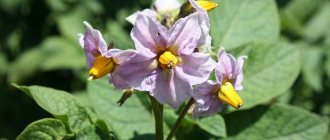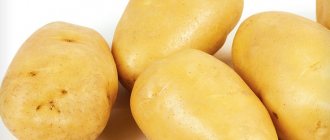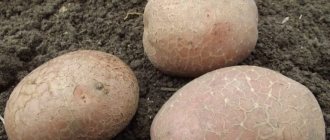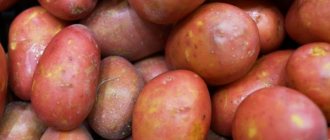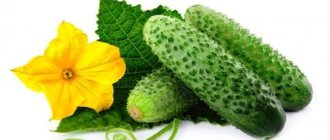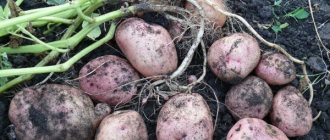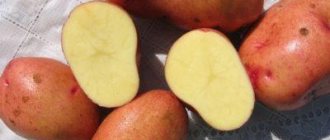The Veneta variety is very well known to European potato producers. In Russia, it is familiar mainly to those who are forced to grow potatoes in difficult climatic conditions: with a short summer, with a high possibility of drought, with a significant probability of late spring or early autumn frosts.
Potato Veneta is a German variety created in 1986. It came to the territory of the Russian Federation much later - in the early 2000s and was mainly recommended for cultivation in Central Asia, in the South Ural regions, as well as at latitudes above Moscow. Today, this variety is appreciated by summer residents and farmers in all regions due to its consistently high yield, as well as excellent preservation of appearance and taste during long-term storage.
Description of the variety, appearance
Veneta is an early-ripening variety, the tubers of which reach technical maturity by the 65th day, but early potatoes can be dug already on the 50th day after planting.
It is recommended to store these potatoes from the 75th day after the emergence of friendly shoots. The size of the root crops of the Veneta variety is average, usually the weight reaches 90-110 g. In this case, from 10 to 12 tubers are formed under the bush. There are very few small waste potatoes under the bushes; basically, the entire ovary reaches a marketable appearance and size. The skin of the Veneta potato is thin, ranging from brown to light sandy depending on the type of soil in which the crop was harvested. The peel can be covered with a pattern in the form of a thin mesh: this pattern is a variant of the norm and appears in cases where the potatoes were grown in unfavorable conditions with a small amount of moisture.
The Veneta potato plant is distinguished by a tall bush up to 75 cm. It has dark green leaves, thick tops, and is not prone to lodging. Veneta blooms with small white flowers collected in a dense inflorescence.
The color of the pulp of potatoes of this variety is white, beige, yellowish. The taste is very high. Due to the low starch content (about 13-14%), potatoes retain their whole appearance when boiled, which is highly valued when boiling jacket potatoes and for salads. The Veneta variety is perfect for producing crispy fried potatoes, as it will not boil and turn into puree during the cooking process.
We recommend! Prepare a classic German salad with Veneta: peel boiled warm potatoes, add the juice of half a lemon, a little salt and ground black pepper to taste! Season with vegetable oil. This variety seems to be made for German salad!
How to store
The variety is suitable for long-term storage. The keeping quality of the tubers is good, the vegetables retain their taste throughout the winter. It is necessary to collect tubers for storage for the winter after they are fully ripe. Vegetables are dug up and dried in a warm room for 2-3 days. After which the tubers are calibrated by size.
It is recommended to store potatoes in the basement or in a cool room. However, avoid sharply lowering the temperature, as the vegetables may be damaged. Once a month, inspect the tubers and discard damaged ones. Wooden or plastic boxes are used for winter storage. It is not recommended to store crops in paper boxes. The paper gets wet and causes rot.
Productivity
The Veneta variety produces stable good yields even under unfavorable dry conditions, as well as in sandy and clay soils. On average, under a bush there are 10-12 tubers weighing up to 100 g; under good conditions, the number of tubers increases to 15-16. All tubers have an even, smooth appearance, oval, with a light-colored skin. On average, the yield is up to 400 centners per hectare. The possibility of obtaining two harvests during the growing season can increase this figure by 1.5 times.
Harvest and storage
The time of harvest is indicated by yellowing of the leaves of the lower tier. Mass digging of potatoes is carried out when all the tops turn yellow.
How and when to collect
Vineta is an early ripening potato variety. From the moment of planting until the harvest ripens, 70-75 days pass, but the first young potatoes can be dug up after 43-45 days.
Storage features and keeping quality of the variety
When the potatoes are dug up, they are dried for several hours and sorted: all rotten tubers are thrown away, and those that were mechanically damaged during harvest are set aside for early consumption.
The remaining tubers are cleared of soil, placed in bags or nets and stored in a pre-disinfected, dry, dark room with good ventilation, where the air temperature is +4-5°C. Higher temperatures lead to drying, wrinkling and premature germination of tubers. The keeping quality of the variety is 87%.
Important! Tubers that will be used for planting in the spring should be stored separately.
Features of cultivation
Attention! This variety does not tolerate excess feeding with nitrogenous fertilizers very well. As a result of overfeeding, the plant mainly goes into the tops, and the root crops lose their ability to be stored for a long time; they quickly deteriorate and rot.
Potatoes of the Veneta variety allow you to get two harvests in the southern regions, subject to additional watering and fertilizing. The first planting takes place in mid-to-late March, the harvest of technical maturity is carried out in early July, and young potatoes begin to be dug in June. The second planting is carried out immediately after harvesting the first crop, with the addition of additional mineral fertilizers and careful watering. The second harvest with this type of planting is harvested at the end of September. At the same time, the yield of the second term will be slightly lower than the July one.
In the northern regions of the Russian Federation, in Siberia and the Far East, Veneta potato varieties are grown in one crop. Tubers are planted in mid-May and dug up for storage in mid-August. This growing season allows you not to risk seedlings in the spring, avoid damage to potatoes by late frosts, and also have time to harvest before the arrival of prolonged autumn rains and frosts.
In order to get the earliest harvest of Veneta potatoes, you must first transfer them to a lighted and warm place for germination. The optimal sprout length for planting for this variety is 1.5 – 2 cm. You can get healthy sprouts by keeping the tubers in boxes in 2 layers in a room with an air temperature of 14-17 degrees for a month. A week before the expected planting date, it is recommended to spray the tubers with water or a light solution of vermicompost and cover them with translucent polyethylene. In this way, you will stimulate the development of young roots around the tuber, and the development of potatoes in the soil will be rapid and the seedlings will be friendly.
It is recommended to hill up potatoes when the top of the plant reaches 10 cm in height. Hilling is carried out high on the upper leaves. Repeated hilling is possible after two weeks, but it is not mandatory.
No later than 21 days before the planned harvest, planting Veneta potatoes must be sprayed with preparations against late blight to prevent the possible development of the disease on the tubers, as well as contamination of the soil with this unpleasant disease.
10-14 days before digging, it is recommended to cut off the potato tops so that the root crops form a dense skin and are better stored.
Photo
See the photo below: Veneta potato variety
There are not too many eyes formed on the tubers, and they themselves are small and almost invisible. Potatoes of this variety have excellent taste and contain no more than 13–15% starch. Tubers are also distinguished by the fact that, as a rule, they do not have any physical surface defects.
The bushes are low, erect (up to 70 cm in height), spreading. During flowering, small white corollas appear. The leaves are also not large in size, they have a light green tint and a characteristic undulation along the edges.
Pros and cons of Veneta potatoes
It is no coincidence that this variety has held a leading position in Europe and Russia for many years. Let's list the main advantages:
- Early ripening of the variety
- High drought resistance without loss of crop quality,
- High taste qualities,
- Excellent storage qualities: potatoes do not wrinkle or rot under standard cellar storage conditions,
- Resistance to the most common potato diseases,
- Undemanding to soils and fertilizers,
- The variety is not demanding in care - one hilling and weeding as needed is enough.
- High yield,
- Does not require watering
- Mechanical planting and hilling of Veneta potatoes is possible.
The only downsides include poor resistance to late blight and medium-sized root crops. For most of our compatriots, 10 potatoes per kilogram is an indicator of small potatoes.
Advantages and disadvantages
Varietal potatoes Vineta of German selection are characterized by the following advantages:
- unusual appetizing color of the core, which is preserved during heat treatment;
- relative resistance to the main pathogenic microorganisms of potatoes - scab, late blight;
- early harvest;
- preservation of presentation in 88% of fruits;
- friendly ripening of tubers;
- undemanding to watering, resistant to heat and drought.
There are no visible shortcomings with proper agricultural technology. If growing conditions are violated, the following features may occur:
- if the soil is oversaturated with nitrogen, potatoes take a long time to germinate in the soil;
- when the soil becomes waterlogged and waterlogged, late blight may occur;
- If the seed material is not treated with pest control before planting, tubers may be damaged.
Diseases and pests
Veneta potato variety has unique characteristics in terms of resistance to the most common viral and bacterial infections. It is practically not affected by golden nematode, potato cancer, wrinkled mosaic, various root rots, and leaf curl virus.
The only disease against which you need to spray regularly and which should be taken into account when planting potatoes on your site is late blight. To avoid damage to the Veneta potato plantation by late blight, tubers should be planted according to a pattern of 40-50 cm between plants in a row and 60-70 cm between rows. Choose predominantly light, unshaded and well-ventilated areas with a low groundwater level. The Veneta variety does not tolerate excess moisture well, the plants weaken, rot, and die.
We recommend! To prevent late blight, before planting, treat the tubers with a solution of copper sulfate, manganese and boric acid: 1 tablespoon of each ingredient per 10 liters of water. The tubers are soaked for 10 minutes immediately before planting.
Insect pests are generally typical for any potato plantings - these are the Colorado potato beetle, wireworm, and mole cricket. The appropriate drugs should be selected against them and used according to the instructions. Potatoes do not absorb insecticides, so they are safe for people.
When to plant and dig Vineta potatoes
You can start planting potatoes in late April early May. The planting period depends on the characteristics of the region in which the summer resident lives. Harvesting is necessary only after the tubers have fully ripened. The ripening period is at least 70 days. Most often, the harvesting period occurs at the beginning of August. Harvesting too late can damage the tubers.
Reviews about Veneta potatoes
Igor Alexandrovich, 60 years old, Nizhny Novgorod
Veneta is a very good variety for garden growing. What we need first of all is to get our harvest as early as possible in order to enjoy boiled young potatoes. This variety is optimal for this. I plant it already at the beginning of April, having previously warmed the ground under the film, I lay straw on top so that frosts do not damage the plants and then the straw, rotting, provides additional nutrition. Already in June, my grandchildren happily devour young home-made potatoes in oil!
Olga Vitalievna, 42 years old, Pskov region
Our area is clayey, high, and the water is far away. I was tormented by what kind of potatoes I didn’t plant – the small ones grow, the harvests are small. I learned about the Veneta variety three years ago and decided to try it, but without much hope. And in vain! The potatoes were a great success! I really liked that the tubers were smooth, oval, and easy to clean. The downside is that in three years the potatoes have degenerated and become smaller. I will change the seeds this year. And the planting area should also be changed, I think.
Nadezhda, 37 years old, Nakhodka
An interesting potato, not large, stores well, but it must be dug up strictly before the rains begin in our Far East. Otherwise, the tops immediately turn black and dark spots are noticeable on the tubers after digging and drying. It cannot tolerate excess moisture. Otherwise - wonderful tasty potatoes, both in salads and fried. We deep fry it a lot, it turns out dense, in long slices.
Ivan Viktorovich, 57 years old, Moscow region
I have been planting Veneta for 7 years now as a particularly early variety. Never let me down. It always sprouts evenly, grows rapidly, the grass cannot keep up with it, so only one weeding is needed, and it coincides with the second hilling. But I start digging potatoes at the beginning of July, and immediately add ash and rotted manure to the hole and put new potatoes from the old harvest there. I leave it specifically for these purposes. And at the end of September I again have young potatoes, which we eat, but we no longer save them for seeds and storage.
Potato care
Since diseases do not interfere with the growth of the root crop, caring for the Veneta variety is easy. Let's look at the features of agricultural technology.
What soil are potatoes planted on?
Before you start spring work, you need to decide on a site for planting potatoes. In general, the Veneta variety is unpretentious. But still, a few words need to be said about the soil.
Warning! It is undesirable to use soils containing clay for planting potatoes. Water stagnates on them.
If legumes grew on the site last year, then this is the best place. Potatoes do not like waterlogging, so there is no need to water them during the growing season. It grows well even in dry summers.
Planting potatoes
Since Veneta potatoes are early ripening, they are planted to obtain an early harvest. As a rule, in early May (based on the readiness of the land).
A week or two before planting, the tubers are pulled out of storage so that the potatoes warm up and sprout. When planting, there is no need to deepen it, 7-10 cm is enough.
After the emergence of seedlings, the first loosening is carried out to destroy small weeds and enrich the root system with oxygen. If the weeds reappear before hilling, you need to go through the hoe again.
It is advisable to hill up twice. In this case, moisture is retained, a high ridge above the bush is the key to the formation of a large number of stolons, which means the harvest will be excellent. Sometimes on a summer cottage they use walk-behind tractors for hilling the Vineta variety. Look at the photo: even rows.
It is not necessary to water, but if it doesn’t rain, you can lightly shed it only between the rows.
How to store
It is best to store Veneta potatoes in nets or bags. The room must be dry and ventilated from time to time. A little humidity is allowed. At elevated temperatures, the tubers dry out, wrinkle, and begin to germinate ahead of time.
Rules for storing potatoes on video:
Characteristics of the variety
Veneta potatoes are early ripening fruits. Harvesting can be done within 1.5 months after planting.
This is a table root vegetable with a high starch content - up to 15%. It has a pronounced, pleasant taste. Excellent heat treatment properties. Used for preparing various dishes.
We recommend reading: “Bellarose Potatoes”
The variety has good immunity to various diseases. Thanks to him, potatoes resist well:
- The causative agent of fetal cancer.
- Nematode.
- Various banded mosaic viruses.
Speaking about late blight, there is immunity to it, but not so pronounced. The tubers are fine, but the tops often suffer from this disease.
Another feature of the variety is its high resistance to drought. This is an important characteristic for the southern regions, where rain is very rare. But at the same time, potatoes have no protection from high temperatures. Therefore, it will not be possible to meet Veneta in regions such as Crimea and Krasnodar.
Variety resistance to diseases
Veneta
Many gardeners fell in love with Vineta for its resistance to various diseases and pests.
Today this is a very important and useful advantage. This variety does not suffer from leaf curl, potato golden cyst nematode, banded and wrinkled mosaic virus, cancer
This factor greatly facilitates the process of growing and caring for the crop. All care comes down to ridding the plant of weeds and periodically loosening the soil. If everything is done correctly and on time, the vineta potatoes will ripen quickly and will not bring unnecessary trouble. At the same time, the harvest will exceed all your expectations.
Thus, the Veneta variety combines the best properties of potatoes: it is easy to grow, the harvest is rich, but, most importantly, many delicious dishes can be prepared from this crop. We boldly declare that German breeders did their best. You can experiment with these potatoes in cooking, because... it brings a unique taste to every dish.
Reproduction methods
Potatoes can be propagated by seed, cuttings, sprouts, layering and dividing the root crop. When using seeds, various infections will not accumulate in root crops. In this case, the seed material will be renewed and ready for reuse within 5-6 years. You can collect the seeds yourself in your own garden and purchase them at a specialty store.
The procedure for collecting and planting seed material is described in the following paragraphs:
- When the lower area of the trunk becomes dry, collect the fruits and place the tops in piles and do not touch them until they decompose.
- Pour in water, knead a little and let sit.
- Drain the liquid and wash the seeds. Place them on a paper sheet to remove excess moisture.
- Dry the seedlings completely at room temperature.
- In mid-April, soak the seeds in water for a day. Place in a box with soil mixture, spreading it over the surface.
- Moisten the soil layer and cover with glass.
- After 4 days, the seeds should produce the first shoots.
- After the appearance of the second true leaf, plant the seedlings in separate pots.
- For 30 days, regularly irrigate the seedlings and apply fertilizing twice.
Next, you can plant the sprouts in rows according to a 60x30 cm pattern. After rooting, it is necessary to care for the plant by irrigating it, loosening the soil layer and applying fertilizers. To propagate by cuttings, planting material must be developed and of a certain age.
Propagation of the crop by cuttings is described in the following stages:
- Plant the tuber in the soil cover in the usual way.
- After 10 days, add fertilizer in the form of Kristalin.
- After 14 days, add fertilizer again in the form of a solution made from 1 bucket of liquid, 25 g of ammonium nitrate, 25 g of superphosphate and a similar amount of potassium sulfate. Add 375 ml of the prepared liquid under each bush.
- Between the first two feedings, hill up the potatoes twice.
- After 45 days between 2 and 3 feedings, after the shoots have formed, pinch the bush to form shoots on the sides.
- When the plant fades, cut off the shoots and divide into several parts. The presence of internode and leaves is a prerequisite.
- Dip the blanks into a container with sand so that foliage remains on the surface.
- After 60 days, remove the emerging tubers for storage. In a year you can get a harvest.
Reproduction of a plant by sprouts will not transmit infection to a new generation if parts of the root crop are missing from the seedlings. It is easy to separate the sprouts from the root crop. To carry out the procedure correctly, you should take the tuber in one hand and turn the sprout with the other.
The procedure for propagation by sprouts is described in the following steps:
- Germinate the vegetable at a temperature not exceeding +15 °C, in the dark or in the light. Ventilate the room. Spray the sprouts with the settled liquid as needed.
- Separate the sprouts if their length reaches 5 cm.
- Place the workpieces in a container with soil mixture, keeping a distance of 7 cm between them.
- Leave the tuber for further germination, since this procedure can be carried out up to 3 times.
- After 30 days, distribute the seedlings on the summer cottage according to a 60x30 cm pattern.
One of the easy ways to propagate a crop without seedlings is to divide the tuber.
The breeding procedure is shown in the following list:
- Germinate the fruits for 20 days at room temperature.
- Cut the tuber into a number of pieces equal to the number of sprouts.
- Dig up the bed, add nitroammophoska in the amount of 50 g per 1 m2.
- Transplant the parts into holes according to a 60x30 cm pattern, after adding 25 g of wood ash and substrate to each hole.
- Care for the plant as usual.
Propagation by layering does not imply cutting off the sprouts, so they must be preserved on the root crop until the seedlings are fully formed. When the shoots are separated from the roots, the parent plant should be covered again with soil mixture to produce new shoots.
The procedure for propagation by layering is described below:
- Sprout healthy tubers and place them in the soil layer according to a 70x30 cm pattern.
- When the bush reaches a height of 20 cm, remove it. Separate cuttings with roots from the root crop.
- Lower the sprouts into the substrate, deepening them by 2 cm and following the 70x30 cm pattern.
The methods that exist for propagation help increase the volume of seed material and can guarantee the purity of planting tubers. The key to success depends not only on the ability to grow potatoes or the chosen method, but also on healthy parent plants, as well as compliance with all the rules for caring for them.

